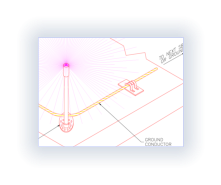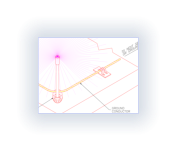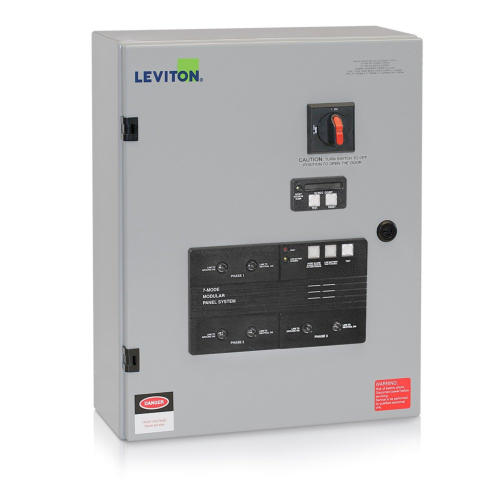
Lightning Protection
Systems
© 2025 Treasure Coast
Engineering, Inc.
4925 13th Lane
Vero Beach, FL 32966
FL CA# 27181
Indian River County
Phone: (772) 567-1007
Email: Info@tce.eng.pro
Privacy Policy
Terms of Use

A lightning strike to an unprotected structure can be catastrophic. A single bolt of lightning can carry
over 30 million volts of electricity. It can rip through roofs, explode brick and concrete and ignite fires. In
addition to causing structural damage, lightning can also wreak havoc with computers, electronic
equipment and appliances.
A lightning protection system provides a safe pathway for energy from a lightning strike to find its way to
earth and dissipate, encouraging the bolt to bypass building components that might otherwise be
damaged. So its job is both to provide a path for the lightning strike to reach ground and to avoid
damaging the building as the electrical current of the lightning bolt flows through the protection system
components.
LIGHTNING RISK ASSESSMENT
Risk analysis calculations can be performed to assist in determining the risk of damage due to lightning.
Once the risk has been determined it can be determined if a lightning protection system is recommended
or optional.
•
Air terminals or lightning rods which form the initial contact point for lightning strikes that are
reaching towards ground in the immediate area.
•
Main Conductor Cables which is connected to the air terminal and/or run near the ridge or other
building high points, routed to the ground.
•
Bonding & Mounting hardware are used to splice or connect between air terminals, cables, ground
rods, and possibly other devices, and to support the air terminals, cables, or other devices in place.
•
Ground rods that are connected to the grounding system for energy dissipation and connected to
the cables.
•
Surge Arrestors/Suppressors are electrical devices installed in or on a building's electrical
components and designed to protect electrical equipment from the electrical surge that occurs
when lightning strikes a nearby power line.
SPECIFICATIONS
•
manufacturer's products allowing us to recommend the best and
most cost-effective materials to meet your needs. We design
systems with you in mind. Because TCE is an independent design
firm, there is no proprietary interest in any and will work with all
manufacturers or installers to guarantee that you get the best results.
IMPORTANT: A proper low impedance ground plane is require to
help eliminate side flashes and damage to electronic equipment.
TCE has the equipment to either test the impedance of your soil or
grounding system.
DRAWINGS
Following our in-house standards for drawings, the lightning protection system component symbols that
we use are consistent with national standards and remain the same throughout. Of course we are able to
sign and seal all drawings we complete!


Lightning Protection
Systems
© 2025 Treasure Coast
Engineering, Inc.
4925 13th Lane
Vero Beach, FL 32966
FL CA# 27181
Indian River County
Phone: (772) 567-1007
Email: Info@tce.eng.pro
Privacy Policy
Terms of Use

A lightning strike to an unprotected structure
can be catastrophic. A single bolt of lightning
can carry over 30 million volts of electricity. It
can rip through roofs, explode brick and
concrete and ignite fires. In addition to causing
structural damage, lightning can also wreak
havoc with computers, electronic equipment and
appliances.
A lightning protection system provides a safe
pathway for energy from a lightning strike to find
its way to earth and dissipate, encouraging the
bolt to bypass building components that might
otherwise be damaged. So its job is both to
provide a path for the lightning strike to reach
ground and to avoid damaging the building as
the electrical current of the lightning bolt flows
through the protection system components.
LIGHTNING RISK ASSESSMENT
Risk analysis calculations can be performed to
assist in determining the risk of damage due to
lightning. Once the risk has been determined it
can be determined if a lightning protection
system is recommended or optional.
•
Air terminals or lightning rods which form
the initial contact point for lightning strikes
that are reaching towards ground in the
immediate area.
•
Main Conductor Cables which is
connected to the air terminal and/or run
near the ridge or other building high
points, routed to the ground.
•
Bonding & Mounting hardware are used to
splice or connect between air terminals,
cables, ground rods, and possibly other
devices, and to support the air terminals,
cables, or other devices in place.
•
Ground rods that are connected to the
grounding system for energy dissipation
and connected to the cables.
•
Surge Arrestors/Suppressors are
electrical devices installed in or on a
building's electrical components and
designed to protect electrical equipment
from the electrical surge that occurs when
lightning strikes a nearby power line.
SPECIFICATIONS
•
manufacturer's products allowing us to
recommend the best and most cost-
effective materials to meet your needs.
We design systems with you in mind.
Because TCE is an independent design
firm, there is no proprietary interest in any
and will work with all manufacturers or
installers to guarantee that you get the
best results. IMPORTANT: A proper low
impedance ground plane is require to help
eliminate side flashes and damage to
electronic equipment. TCE has the
equipment to either test the impedance of
your soil or grounding system.
DRAWINGS
Following our in-house
standards for drawings, the
lightning protection system
component symbols that we
use are consistent with
national standards and
remain the same throughout.
Of course we are able to sign and seal all
drawings we complete!















